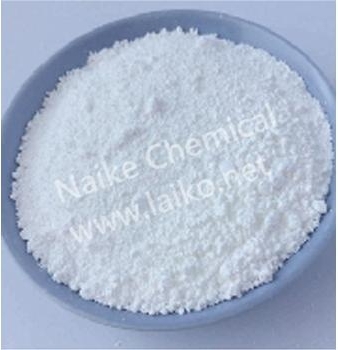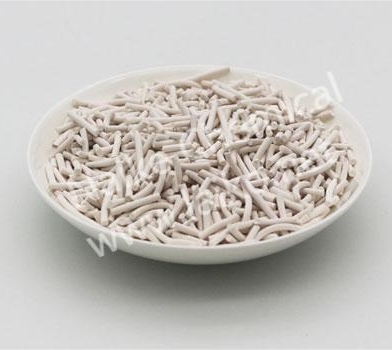What Does the Catalyst Do in Cracking?
What Are the Products of Catalytic Cracking?
Catalytic cracking is one of the petroleum refining processes, which is the process by which heavy oils are cracked in the presence of heat and catalysts and transformed into cracked gas, gasoline, and diesel, among others. The process of cracking heavy oils under the action of heat and catalysts to transform them into cracked gas, gasoline, diesel, etc. The main reactions are decomposition, isomerization, hydrogen transfer, aromatization, condensation, and coking. Compared to thermal cracking, it has a higher yield of light oil, higher octane value of gasoline, better stability of diesel, and produces olefin-rich liquefied gas as a by-product.
Cracking is the process of breaking long-chain hydrocarbons in petroleum fractionation products (including LPG) into short-chain hydrocarbons such as ethylene and propylene at a higher temperature than cracking (700°C to 800°C, sometimes up to 1000°C or more) in the petrochemical production process. Cracking is a more in-depth form of cracking. The chemical process of petroleum cracking is complex and the resulting cracked gas is a complex mixture of components, including propylene, isobutene, methane, ethane, butane, alkynes, hydrogen sulphide, and oxides of carbon, in addition to the main product ethylene. The cracked gas can be purified and separated to obtain the required purity of ethylene, propylene, and other basic organic chemical raw materials. Currently, petroleum cracking has become the main method of producing ethylene. In petroleum refining, both catalytic cracking, thermal cracking, and coking processes produce gases containing propylene, with the catalytic cracking process producing the most propylene.
Catalyst Used in Fluid Catalytic Cracking
A catalyst is generally a substance that increases the rate of a reaction without changing the total standard Gibbs free energy of the reaction, and can also be expressed as a substance that increases the rate of a chemical reaction in a chemical reaction without changing the chemical equilibrium, and whose own quality and chemical properties do not change before or after the chemical reaction. According to statistics, catalysts are used in approximately 90% of industrial processes, such as chemical, petrochemical, biochemical and environmental protection.
Fluid catalytic cracking catalysts have been developed into two main categories: unqualified aluminium silicate catalysts and zeolite molecular sieve microsphere catalysts. The zeolite molecular sieve microsphere catalysts can be divided according to raw materials and manufacturing process into all-white clay catalysts with partial crystallization of the white clay matrix into zeolite (i.e. in-situ crystallization), and fully synthetic zeolite catalysts and semi-synthetic zeolite catalysts prepared separately from zeolite and matrix.
Fluid catalytic cracking catalysts consist mainly of a matrix and an active part (molecular sieve), sometimes with the aid of a binder. The current catalysts used in catalytic cracking consist of a molecular sieve, a matrix (also known as a stretcher), and a binder.
The matrix makes up the majority of the catalyst and the zeolite content varies with the catalyst species, generally ranging from 10 to 40%, with high zeolite content usually costing more to manufacture.

What Does the Catalyst Do in Cracking?
A catalyst is a chemical substance that can change the reaction rate of a chemical reaction without changing the thermodynamic equilibrium position of the chemical reaction and is not itself significantly consumed in the chemical reaction.
1. Accelerates the rate of chemical reactions and increases production capacity.
2. Catalysts only accelerate the equilibrium reaction, but cannot change the equilibrium position of the reaction.
3. Catalysts are selective for reactions, when the reaction has more than one different direction, the catalyst only accelerates one of them, promoting the reaction rate and selectivity is unified.
4. The life of a catalyst. The catalyst can change the rate of chemical reaction itself, itself does not enter the reaction, ideally, the catalyst is not changed by the reaction. In the actual reaction process, the catalyst is subjected to heat and chemical action for a long time and also undergoes Physico-chemical changes.
5. For complex reactions, it can be chosen to accelerate the rate of the primary reaction, inhibit the secondary reaction and increase the yield of the target product.
6. Improve operating conditions, reduce the requirements for equipment and improve production conditions.
7. Develop new reaction processes, expand the use of raw materials and simplify the production process route.
8. Eliminate pollution and protect the environment.
Catalysts have an important role in chemical production, and most chemical production involves catalysts. For example, in the petroleum refining process, high-efficiency catalysts are used to produce gasoline, paraffin, etc.; in the treatment of automobile exhaust, attributed to the use of catalysts to promote the conversion of harmful gases; the brewing industry and the pharmaceutical industry are used as catalysts for enzymes, certain enzyme preparations are also valuable drugs.




